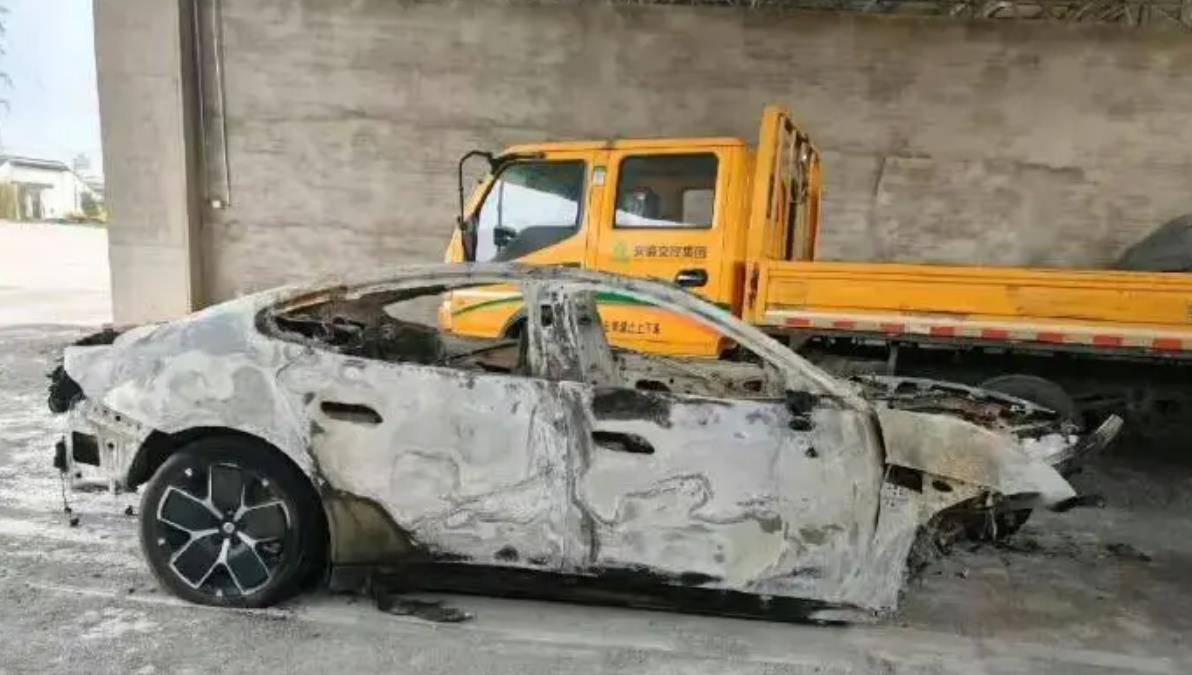Xiaomi ushered in the darkest moment in the history of car-building.
Xiaomi's historical high retraced nearly 25% of its market value evaporated by more than 300 billion yuan
On April 3, Hong Kong stocks opened.Xiaomi Group fell more than 3%, reaching an intraday low of HK$44.6, down more than 22% from the March high of HK$59.45.
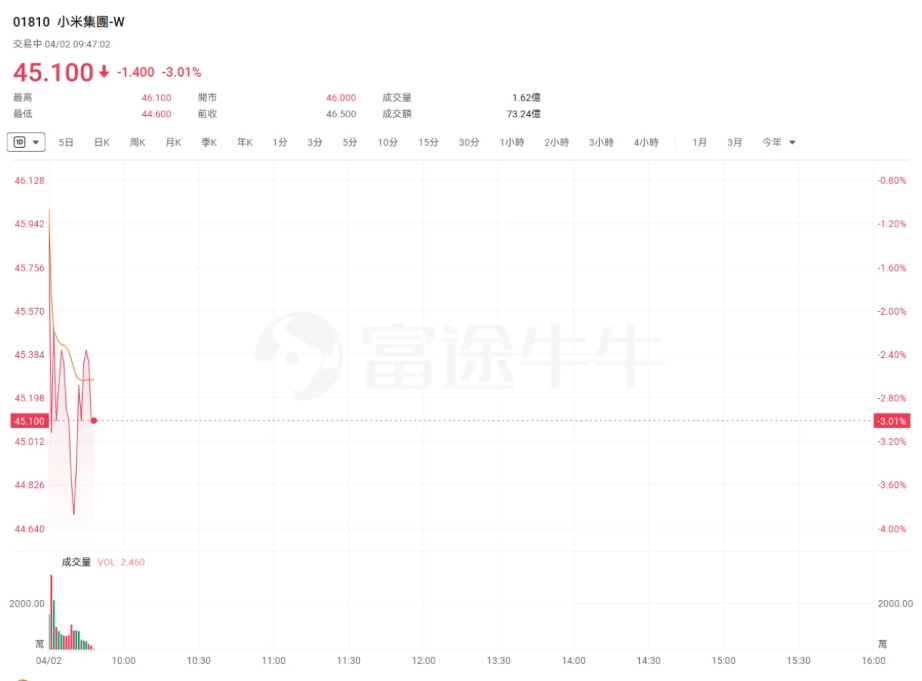
In the seventh year of rapid development in the new energy vehicle industry, Xiaomi Group suffered a head start.The fatal SU7 accident that occurred on the Deshang Expressway in Anhui late at night on March 29, 2025 not only fixed the lives of three young girls forever on the way to the exam, but also caused a stormy wave in the capital market. As of April 2, Hong Kong stocks closed, Xiaomi Group's share price retreated nearly 25% from its historical high in mid-March, and its market value evaporated by more than 300 billion Hong Kong dollars.
From 22:44 when the accident occurred to 72 hours when Lei Jun spoke on Weibo, the capital market had completed a cruel vote with real money.At the moment when the accident vehicle collided with the cement pile in the isolation belt, the NOA intelligent driving assistance system equipped with the SU7 standard version continued to operate at a speed of 116km/h, even though the system issued a deceleration request one second before the collision and reduced the speed to 97km/h, but the driver's operating window is only less than 2 seconds-a figure far lower than the human average stress response time of 2.3 seconds.
When the vehicle's battery exploded due to a severe impact, the suspected failure of the mechanical emergency handle and the design flaws of the electronic door lock system completely tore the fragile veil of safety redundancy for smart cars.The feedback from the capital market on this was tragic: Xiaomi's Hong Kong stocks plunged 5.59% at the opening day after the accident, the market value of U.S. stocks evaporated by more than US$5 billion simultaneously, and the proportion of short sellers surged to a three-month high.
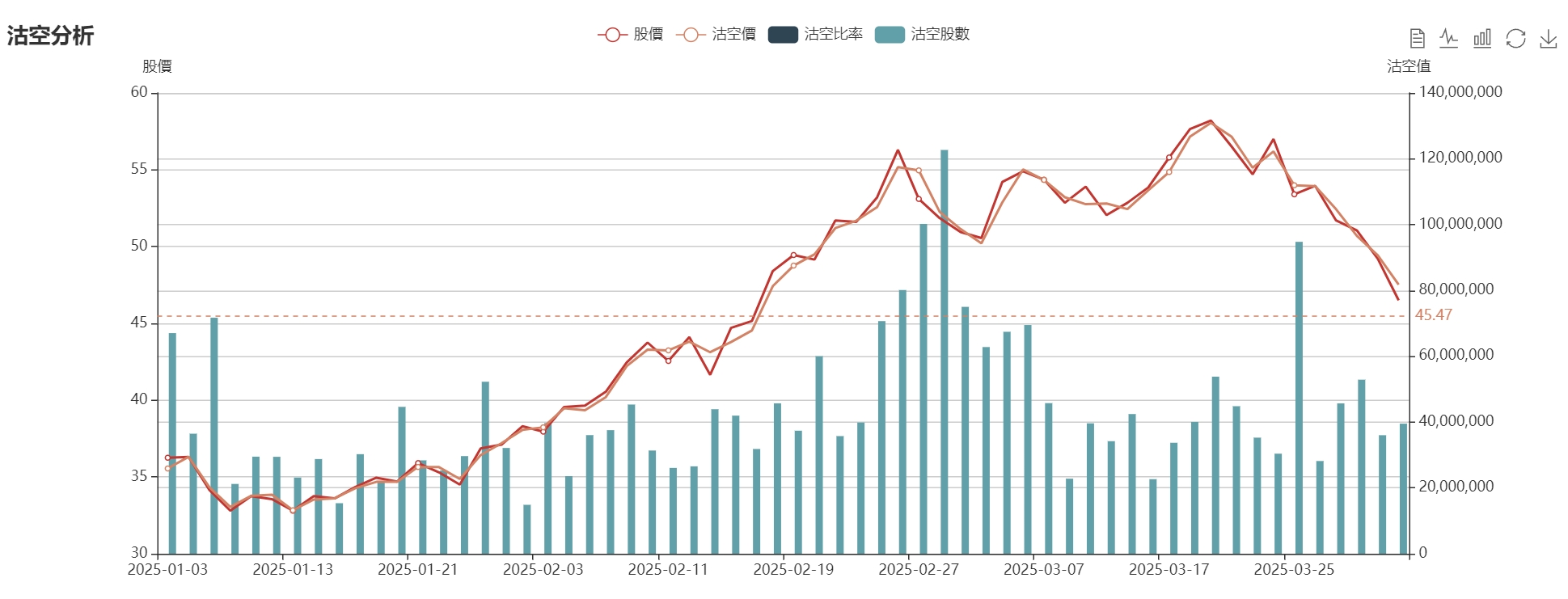
Pure visual perception solution with only 84TOPS computing power
In this car accident, Xiaomi SU7 's smart driving plan has to take the blame.
The pure visual perception solution adopted by the Xiaomi SU7 standard version has natural flaws in its ability to recognize static obstacles such as cones and water horses under complex road conditions at night, which is in sharp contrast to the "full-scene intelligent driving" promoted by car companies.
The standard version is mainly equipped with a NVIDIA Orin N chip, adopting a pure vision solution mainly composed of a camera and millimeter wave radar, with a computing power of only 84TOPS; in contrast, the Xiaomi SU7 Pro and Max versions use a dual Orin X chip, and equipped with Hesai 128-line laser radar, together with multiple millimeter wave radars and cameras, form a stronger laser radar solution, with a computing power of up to 508TOPS.
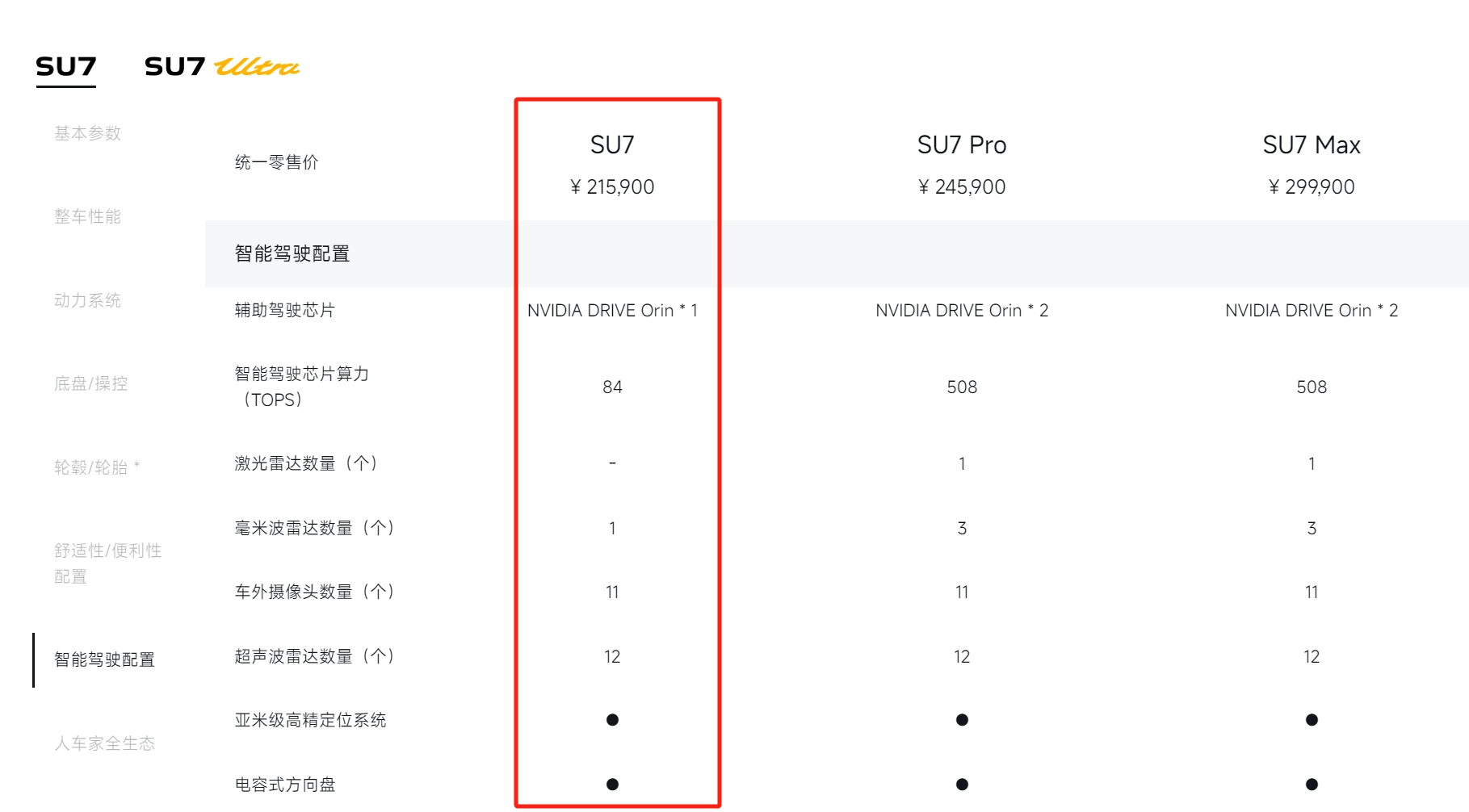
What is even more disturbing is the exemption clause in the user manual that "the system cannot replace human judgment." In the competition of capital to pursue mass production speed, the margin of safety is compressed into a cost item on the financial statements.

Although Lei Jun set up a special team overnight and promised to "never avoid it," investors are more concerned about the possible chain reaction of the accident: as of April 1, 12 institutions have lowered Xiaomi's target price, and Morgan Stanley will The valuation of the smart car business has been reduced from US$38 billion to US$27 billion.
The more far-reaching impact lies in the collapse of brand trust-third-party surveys showed that SU7 's potential customer conversion rate dropped by 40% after the accident, and the wave of cancellations has spread from Anhui to experience stores across the country.This crisis of trust is already beginning to appear in financial data: Xiaomi's 2024 Q4 automotive business gross profit margin is 2.3 percentage points lower than expected, but the proportion of R & D expenses continues to fall. This development model of "focusing on marketing over safety" is being accepted. Severe review by the capital market.
According to Article 46 of the Product Quality Law, if the vehicle is finally determined to have design defects, Xiaomi may face sky-high compensation.Referring to the case law of Tesla Autopilot's death case, even if the driver makes operational errors, the car company still has to bear secondary responsibility.What is even more difficult is the sharing of responsibilities among road builders-the Tongling City Transportation Bureau has established a working group. If the investigation shows that construction warnings are insufficient, the responsibility determination of multiple parties will greatly extend the crisis cycle.A private equity fund manager revealed: "We are measuring the scale of compensation under three scenarios. The worst case scenario may swallow up the annual profit of Xiaomi's automobile business."

In the week after the accident, the market value of new car companies such as Nilai and Xiaopeng fell by an average of 8%, reflecting the market's collective anxiety about industry safety standards.Investors 'risk aversion has given rise to a new valuation dimension: Goldman Sachs' latest report incorporated the "safety redundancy factor" into the car company's rating model, requiring a buffer of more than 3 seconds for the takeover time of intelligent driving systems.This shift has forced companies to increase investment in safety-Great Wall Motors announced overnight that an additional 2 billion yuan will be used for the construction of collision test facilities, while Ideal Motors postponed the city's NOA push plan.The punitive decline in the secondary market is using the power of capital to force the industry to return to its safe nature.
Lei Jun responded late at night: Never escape
On the evening of April 1, Lei Jun responded to this incident on Weibo.
He said: "I feel very heavy about this accident on the evening of the 29th.The unfortunate death of three young girls is unbearable grief for their families, friends, and even each of us.On behalf of Xiaomi, I would like to express my deepest condolences and sincere condolences to their families
Our team established a special team as soon as possible, rushed to the scene on the 30th, and cooperated with the police to collect and submit the vehicle data we had on the 31st.
Since the accident is still under investigation, we have not been in contact with the accident car, and many questions have not yet been answered.
By this time, I felt that I should not wait any longer. I had to stand up and promise on behalf of Xiaomi: No matter what happens, Xiaomi will not evade it. We will continue to cooperate with the police investigation, follow up on the progress of the matter, and do our best to respond to issues of concern to family members and society.
Thank you for your attention and criticism. We have heard and written down every word you said. We will answer your questions with actions.”
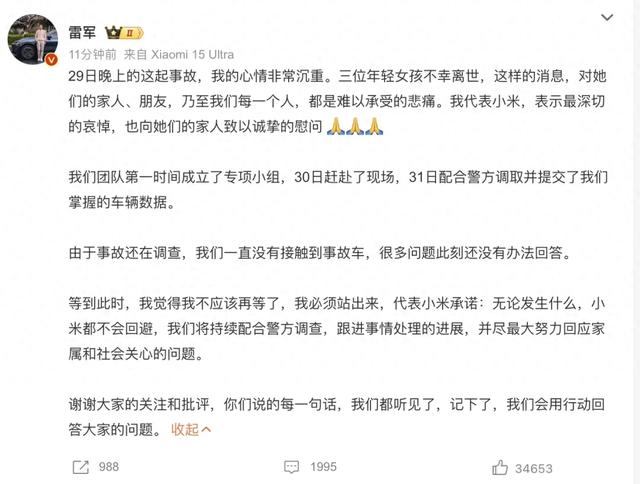
Although Lei Jun emphasized "answering with actions" on Weibo, the special team failed to contact the family members 'communication vacuum for four days, which was in sharp contrast to the 72 hours of crisis public relations gold expected by the capital market. Today's free fall of Xiaomi's Hong Kong stocks is the best proof.
What is even more noteworthy is the credibility crisis of technical data: Xiaomi's unilaterally released driving data was questioned by family members. A hedge fund partner pointed out: "When a car company is both a data provider and a responsible person, the third-party verification mechanism The lack will continue to suppress valuation repairs."This trust deficit continues to ferment on social media, and the #Xiaomi Data Reality #topic has been read more than 2 billion times.
So far, Xiaomi has not made a convincing response to the market's concerns about "spontaneous combustion" and "closed car doors".
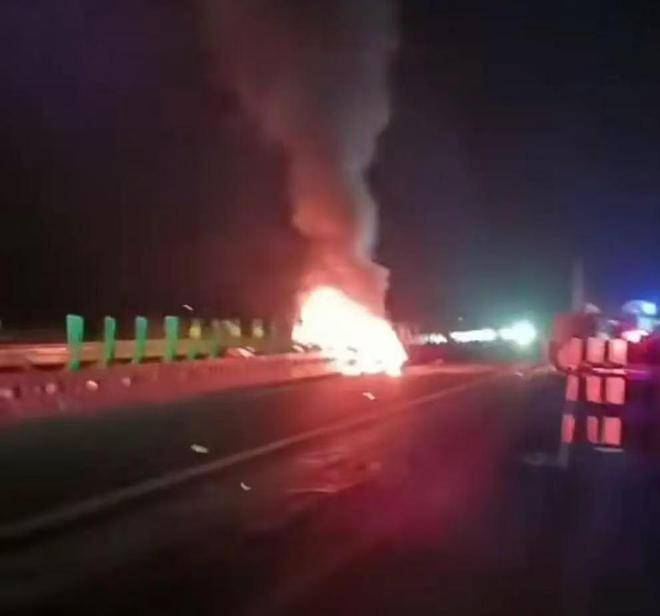
3.29 Combing the context of Xiaomi's car accident
1. March 29 22:27:17
l The Xiaomi SU7 Standard Edition activates the NOA Intelligent Assisted Driving System at Deshang Expressway at a speed of 116km/h.InvalidParameterValue
l 22:28:17 The system triggered a "mild distraction alarm" for the first time, prompting the driver to be distracted.InvalidParameterValue
2. 22:36:48
l The NOA system issues a "hand-off warning", requiring the driver to hold the steering wheel tightly.InvalidParameterValue
3. 22:44:24
l The vehicle detected obstacles in the construction section ahead, issued a risk warning and began to slow down.InvalidParameterValue
l 22:44:25 The driver took over the vehicle, reduced the speed to 97km/h, and still collided with the cement pile of the isolation belt after the steering operation.InvalidParameterValue
4. 22:44:28-22:44:39
l Ecall on the vehicle triggered emergency rescue, and 11 seconds later, the alarm and 120 first aid were turned on, but the vehicle had exploded, killing three people.InvalidParameterValue
5. on March 30
l Xiaomi set up a special team to rush to Tongling, Anhui Province to cooperate with police investigation and evidence collection.InvalidParameterValue
6. on the evening of March 31
l Xiaomi submitted complete vehicle driving data and system operation information to the police.InvalidParameterValue
7. April 1
l Xiaomi released details of the accident on its official Weibo account, saying that the driver was not the owner of the car and promised to cooperate with the investigation.InvalidParameterValue
l The family members claimed that they had not been contacted by Xiaomi and disclosed details such as the carbonization of the victims 'bodies.InvalidParameterValue
l The Tongling City Emergency Management Bureau confirmed that the accident was a unilateral traffic accident, and the police investigation continued.InvalidParameterValue
l Xiaomi's Hong Kong stocks fell more than 6% on the day, and their market value evaporated by more than HK$70 billion.InvalidParameterValue
l Lei Jun responded late at night: By this time, I can't wait any longer. No matter what happens, Xiaomi will not avoid it.
8. April 2
l The incident continued to ferment, and the focus of market attention shifted to responsibility identification and technical defect disputes.
